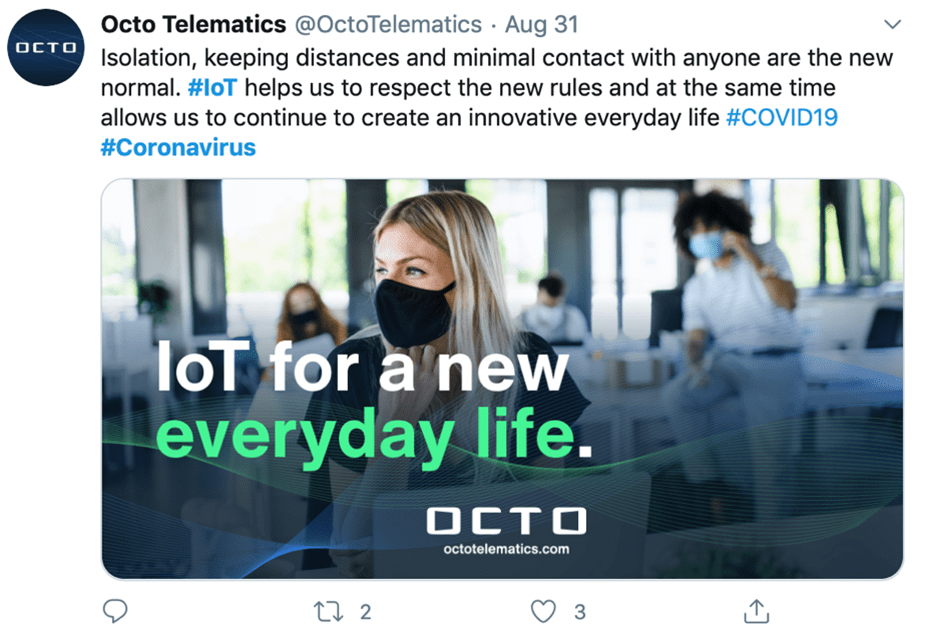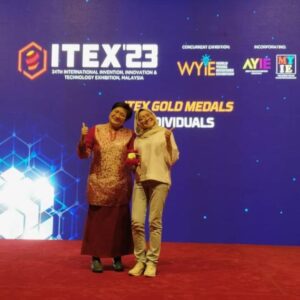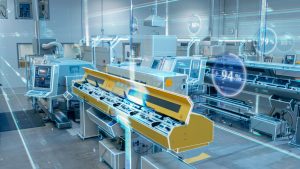An Introduction to “The Internet of Things”
The Internet of Things also abbreviated as “IoT” is a term that was proposed by Kevin Ashton in 1999. Internet of Things is a network that connects anything with the Internet and enables it to communicate and exchange data in order to facilitate the user. The intended network can help in monitoring, controlling, administering, and smart recognition.
IoT is a mesh of smart things designed to communicate with each other to perform tasks and share data with minimum or no human interference. Any object or thing can be converted into a smart thing and connected with other smart devices to form an Internet of Things. The IoT system can be designed according to the requirements of the user. The objects can be a vehicle, a toy, medical instrument, home appliance, electronic device, complex industrial equipment or any other equipment that we want to integrate into the IoT system. A smart thing has four basic components; Sensors, a Microcontroller, Communication Unit and a Power Supply.
The aim of the Internet of Things is to make the environment smart and intelligent and utilize objects and devices to solve problems and optimize day-to-day tasks. IoT is a combination of numerous software and hardware that collectively monitor, store, analyse, and process data to perform the desired functions.

In five years, the expected value of IoT market is $1.2561 trillion. Last year the worth of the IoT market was $456 billion. It seems like the IoT market will keep on growing in the near future without any predictable limit!

IoT can remake cities into smart cities through connected technologies and several countries are investing in IoT projects to solve everyday problems through smart solutions. The concept of a smart city can meet the rising needs and demands of the people and they are an effective way to improve the quality of life by collecting information to make accurate predictions and to automate processes. Over the past number of years, Coronavirus has impacted the economy, affecting virtually every sector around the Globe. The temporary lockdown demands for modern digitized solutions. Considering the new situation, the smart city has great potential in controlling the contagion and helping the economy by ensuring that day-to-day activities are not disrupted further.
How exactly does the IoT work?
The CERP or Cluster of European Research Projects makes it easier to understand how the IoT works. According to the CERP, the IoT is a part of the future internet that can be defined as a dynamic global infrastructure. This infrastructure would incorporate self-configuring capabilities of the physical objects. The objects or virtual entities would have physical attributes and identities and would be able to initiate communication via protocols and intelligent interfaces.
In the Internet of Things, all “things” are actively engaged in social interactions and businesses. The things are capable of interacting amongst themselves and the external environment. The internet serves as a communication channel that connects these things together which enables them to communicate. The interaction between the things influences changes by triggering a single process or series of processes. This is possible without any assistance from a human and hence makes the objects in the IoT, “Smart” objects.
Hence, all devices or physical objects use the internet as their primary channel of communication. They have their unique IP addresses and are able to work effectively in automating day-to-day tasks.
State-of-the-art
The Internet of Things is the next stage in the evolution of the Internet. It has all the capability to connect devices and objects in the real world and make them communicate with each other. Ashton, who coined the term IoT said; “The Internet of Things has the potential to change the world, just as the Internet did. Maybe even more so”. IoT can connect anything, anywhere, at any time. The emerging technology is growing at a fast pace and companies are saving billions by making use of it.
Today, IoT has the capability to interconnect smart objects through wireless or wired networks allowing for automated collaboration and minimizing human efforts in performing simple tasks, saving cost and time, and improving the quality of life.
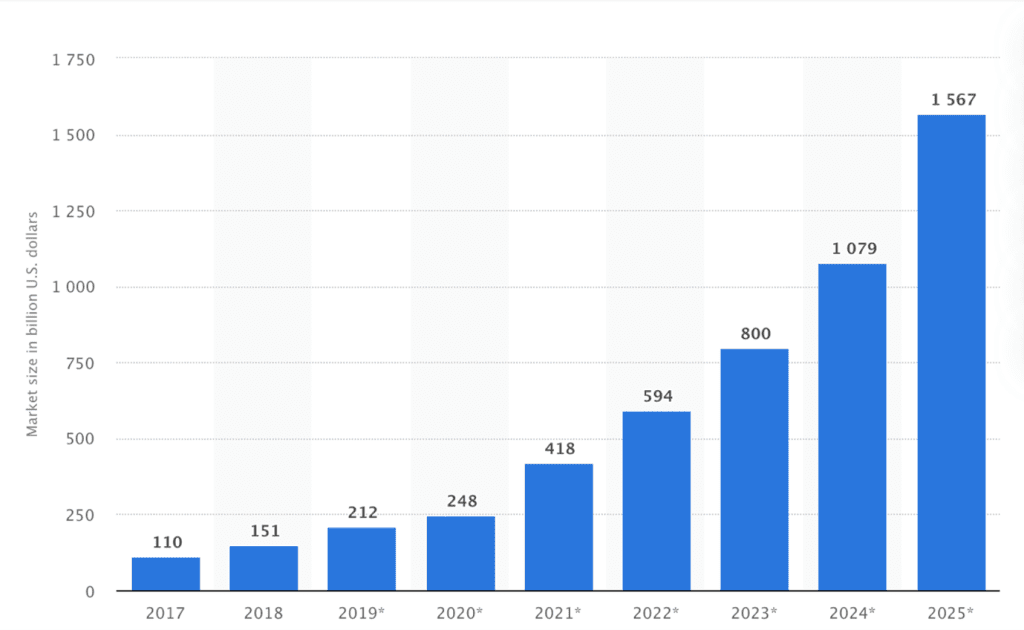
IoT is still in a rudimentary state and cannot be categorized with full certainty. Every second, around 127 new devices are connecting to the internet. The market value of IoT is expected to cross $7.1 trillion at the end of this year.
The IoT and its capability
In a system where all physical objects have the tendency to interact and communicate via sensors and intelligent interfaces, there is a great deal of possibility.
-
Capability of connecting living and inanimate things
The IoT can connect everything from everyday objects to industrial equipment, enabling objects like turbines, utility metres, automobiles, heavy machinery, as well as plants and animals to communicate with each other. Cisco expands the definition of the IoT to the “Internet of Everything” or the “IoE”. The IoE includes people, places, objects, and things. Therefore anything and everything that can be connected to a sensor and enable interaction can be a part of the IoT.
The versatility of the IoT can turn the tables for a business organization and can even save precious lives. Let’s take an example of its implementation in a hospital. The patients and their monitoring devices would be able to communicate without the intervention of doctors and nurses. This communication could help a machine adjust to its patient’s current health status, thereby tracking changes and collecting statistics on the patient’s health.
-
Enable data collection via sensors
All physical objects in the IoT would incorporate one or more sensors. The sensors are used as a bridge between the device and the real-world environment; they collect raw data, process the information and convert it into a machine-understandable format to make it understandable and shareable between the devices. Sensors are a critical part of IoT and without them, the network cannot collect and share data. Sensors are used to monitor and sense the environment to identify the changes in order to make a smart decision.
Consider the use of the IoT in a weather forecast system. The ability to predict certain weather changes could boost the accommodation and efficiency of smart homes and buildings. It could help by providing severe weather warnings or could automatically cause the windows of the buildings to close as a result of predicted rainfall. The weather monitoring sensors could play a vital role in this scenario by detecting shifts in wind pressure, humidity level, temperature, wind direction, atmospheric pressure, and other important factors.
-
Ability to control the items that interact over the IP network
All equipment that is a part of the IoT communicates via the IP network. Therefore, all IoT-enabled devices can exchange information related to their states and their surroundings with other machines, software systems, and people. The ability to control the interaction is what takes the IoT to the next level. The information retrieved from the devices can be shared at that instant (real-time) or saved for later. It can also be transmitted through several intervals.
Let’s take an example of how we could control devices that are part of an IoT network. Do you find yourself being distracted and tempted for a snack during your fitness routine? Well, you could connect your treadmill to your refrigerator. Why would that be useful? You could programme the devices in a way that enables the refrigerator to stay locked until you have completed several miles on the treadmill. Therefore the refrigerator would automatically unlock and provide you access to a snack, only when you complete the treadmill task for that time. Good-going you say? Yes!
Why is the IoT so important?
IoT is now the next big thing. The IoT has not reached its full capacity yet and still has a long way to go. IoT is growing for both everyday use and industrial use, making our lives smart and better. IoT is helping businesses across the globe in reducing costs, increasing efficiency, and improving quality from end to end. As more and more items get digitized and connected in the real world, the IoT will bring more revolution and improvement in our lives.
The world is very tech-savvy as it is today. However, it still presents many limitations on efficiency. People are not machines and can get tired easily. They have a limited attention span, limited time, and therefore limited ability to work effectively. This presents a constraint on being able to capture huge amounts of important data in the real world. Computers and other technical gadgets can definitely help achieve certain tasks but they require the intervention of humans to be able to complete tasks efficiently. A lot of time and effort is wasted in programming devices that have the capacity to work on their own.
It is not the joys of being able to have tasks automated and devices to serve as robots that are the determining factors of an effective IoT system. It is the huge amounts of data that can be collected and stored from automated processes that are incapable of being neglected. Information and useful data can really help change the world and save lives in critical scenarios. The collection of data can help track important changes and can prove to be of great importance to an organization.
The IoT can effectively bring market players to one platform. All those entities in the market that were clueless about each other could effectively interact and exchange information with each other. They could do this without having to set up meetings and phone calls. The IoT is enabling old and new economies to merge their strengths through partnerships and acquisitions with each other. This in return enables them to move towards faster progress. Not only can they progress individually but can help one another in shaping the future.
The IoT and security concerns
The IoT is emerging rapidly and is soon going to take over the world of technology. However, with the number of devices that are being connected to the IoT increasing by the day, vulnerability to cyber-attacks may also be increasing. At the end of 2020, the estimated number of connected devices stood at more than 30 billion. Connecting this enormous number of devices together requires high security in order to maintain the privacy of the users and avoid scams and fraudulent schemes. When we talk about internet security, the majority of people visualize their laptops and personal computers. Countless home appliances in a household like refrigerators and TVs are connected to the internet. People are unaware that these smart devices lack proper security and hence open doors to malicious threats and activities.
A homeowner may be clueless regarding the threats involved with the use of the IoT at his or her home. Cybercriminals such as hackers can compromise the security of smart home devices by turning them into “bots”. These bots can then secretly provide cybercriminals with personal information. They can then use this personal information to perform malicious activities. The longer these cyber criminals remain un-exposed, the stronger they become.
There have been many serious cases in which the security of the IoT had been compromised. An example includes researchers that hacked into two cars, switched off the lights and wirelessly disabled the brake system. The driver had no control over what was happening. Another example includes a luxury yacht that was hacked by researchers. The yacht was forced to sail off at the wrong destination since its GPS navigation system had been hacked into. There are many more examples that prove that cybercriminals can hack just about any software at any time.
Achieving the privacy of data is important in IoT. IoT bridges the gap between the digital world and the real world which means if the security and privacy of the digital world are compromised, it will have direct effects on real life. It must be noted that all internet-operated devices are appealing to cybercriminals since they can program them to perform in an unintended manner. Smart devices have weak security systems that can easily be broken into. Sensors and actuators are collecting sensitive data that can easily target the privacy of the user. Therefore, people must implement reliable security controls that can protect all internet-operated devices from malicious attacks.
Addressing the security concerns
People can start by educating themselves on the vulnerabilities and threats that un-secure IoT devices can face. They can then plan and implement proper security measures to ensure that there is better protection. Never keep default passwords and change the passwords of all intelligent interfaces and devices prior to putting them in use. Make it a practice to use strong passwords and change them every now and then.
Tech-savvy people understand and implement the use of strong passwords. However, manufacturers of smart devices can find it difficult to do so. They lack the technical expertise and hence security is compromised. The problems that the manufacturers face should not be taken lightly. Proper programmers need to be available that can implement secure systems into smart devices. The devices need to be programmed in a way that lays emphasis on their processing power and memory. This will enable them to work better with advanced systems.
All vendors of smart appliances need to focus on adding better encryption systems. The privacy of people needs to be valued and programmers must ensure that there are validation checks that help address privacy concerns. They must implement the use of threat analysis to gather useful findings that may cause the application to be at risk. In the case of a suspected attack or misuse of information, the users must be presented with safety warnings.
In a nutshell, security has to be the focal point throughout the development life cycles of the smart appliances. The programming needs to have rigorous validation, data verification and authentication. The software must be resilient and reliable. All software layers need to be examined carefully to ensure that the smart devices are based on extremely secure platforms.
The IoT is nearly in full swing
Think you live in an environment where there is no use of the IoT? You may want to think again. The IoT is literally everywhere and hence one cannot neglect its presence around us. It connects just about any device; cars, laptops, smartphones, refrigerators, microwaves, exercise machines, televisions, sophisticated industrial machinery. In 2008, internet-connected devices exceeded the total population of the world and today that number has significantly increased. Cisco IBSG predicted there would be 50 billion devices connected to the Internet by 2020. Manufacturers have started developing devices that are capable of being a part of the IoT. The devices are designed in a manner that enables energy to be utilized effectively. These devices are designed to be smart enabling them to communicate and work effectively through the use of an internet connection. The development of silicon chips for use with the IoT has drastically increased and is being incorporated into countless home appliances.
The internet protocol version 6 also known as the “IPv6” has arrived and has taken over the IPv4. Now there is plenty of room to support many more IP addresses than the IPv4 was capable of supporting. Exactly how much room you say? Well around the value of 2¹²⁸! Yes, that is incredible! This means that there is enough room on the IoT to connect almost every device on the planet.
The IoT is capable of storing gigantic amounts of data and it can do this pretty easily. Communication is not restrained to humans alone. With the IoT, many devices are able to effectively interact with each other. Cars will also be able to communicate with each other and hence can save passengers from serious accidents. Your car could also communicate with the lights system and can cause the lights of the garage to automatically turn on when your car is approaching.
Since all internet-operated devices are subject to threats. Manufacturers around the world have already started to design reliable devices that can give people peace of mind. A lot of research and work is put into creating secure devices and the importance of their security is rapidly being addressed.
Many businesses have already implemented the use of the IoT and are effectively gaining handsome rewards from it. Efficiency has increased and manpower can be utilized in a more effective manner. Those tasks that would have been dependent on human intervention are slowly becoming independent of it. Frozen food suppliers are using the IoT today to track containers and provide the stores with information regarding their status.
Data centres are evolving and their usage is being maximized. Gone are the days when data centres would be considered boring. They have now turned into robust tools that effectively cater to the needs of the IoT. They are successfully helping in revolutionizing the manner through which people manage data.
How to get started with the IoT
For a device to be a part of the IoT, it has to be connected to a reliable internet connection. Therefore the first step towards an IoT system requires converting networks that are currently on proprietary protocols to networks based on IP addresses. A good approach is to start slow and allow the IoT network to evolve. Enterprises that require implementation of the IoT need to strengthen their links between IT and Operational technology so that they can manage the tasks of the enterprise in an efficient manner.
The internet makes it possible for people to create their own personalized IoT world at home. If you are a skilled programmer, you can create smart devices that can effectively communicate with one another. There are many programming frameworks available along with tutorials on the internet. Following these tutorials and guidance can help you create masterpieces that you will definitely want to boast about. IoT developers can also be hired that can do all the hard work for you.
There is a wide variety of wireless sensors available in the market. These wireless sensors are used to trigger processes and serve as the platforms for the IoT. One can easily purchase these from the internet. If you are not keen on installing these sensors, you can always take assistance from the internet. Experts are available that can assist customers and can help you get an IoT system started very easily.
It is important to note that the IoT system must be secure so that you can use it with peace of mind. Ensure that every device that connects to the IoT is safe and reliable. Only then will it be effective to use. There is no joy in implementing an IoT system that is compromising your privacy and safety. As discussed earlier, it provides a great risk of vulnerability to malicious attacks. People need to be aware of security threats and need to ensure that they implement systems that they can count on.
COVID-19 and the Internet of Things

With the unprecedented impacts of COVID-19 on almost everything, technology is playing an important role in automating the processes to avoid physical contact. People are interacting with technology in this pandemic like never before.
. 
They are adapting and learning the opportunities as well as the challenges that come with these innovative and advanced technologies. IoT applications are being used to help fight COVID-19. Remote monitoring for the elderly and critical patients is aiding in COVID-19 fight by monitoring and tracking the patient’s data like heart rate, oxygen level, blood pressure, etc, and sending the information in real-time to the relevant person. Countries like China are using robotic assistance in jobs like cleaning and disinfecting public places, especially hospitals. Drones have been of great help, they are being used for delivering medical supplies, monitoring public spaces, and most importantly for spraying disinfectants. Before this pandemic, robots were considered as a threat to mankind as they can steal our jobs. But in this situation, companies are relying on robots and IoT solutions to survive and cope with the situation as they can provide contact-free alternatives and solutions.
